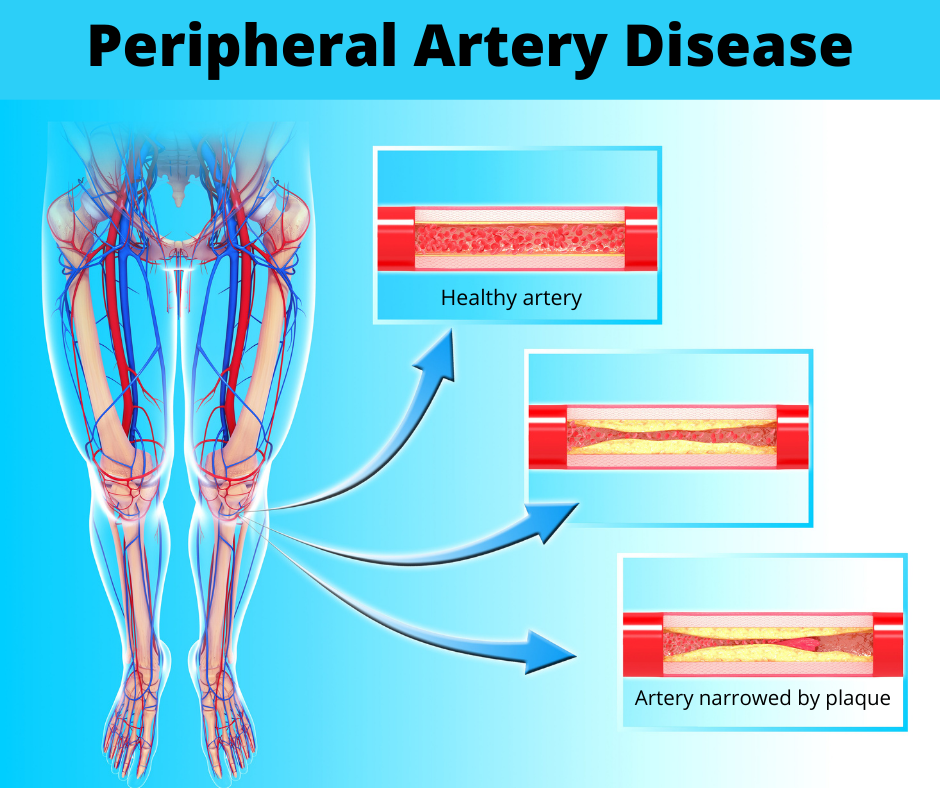If you have unexplained leg pain or wounds to your feet or toes that struggle to heal, you could be suffering from Peripheral Artery Disease, or PAD.
PAD is when the arteries of the legs or other extremities become narrow or clogged leading to poor circulation. 10 million Americans currently suffer from PAD, according to the Society for Vascular Surgery.
September is PAD Awareness Month. Did you know this condition can cause serious issues like stroke and loss of limbs if left untreated? In addition to leg pain or wounds that don’t heal, other indicators of PAD may include:
- Painful muscle cramps in the hips, thighs or calves
- Gangrene or dead tissue on the feet or legs
- Noticeable decrease in temperature of the lower leg or foot as compared to the other leg or rest of the body
- Poor growth on toe nails or leg hair
- Erectile dysfunction, especially in men with diabetes
How can you prevent Peripheral Artery Disease?
Some ways that our board-certified vascular surgeons at CTVS recommend preventing PAD are to:
- Stop smoking
- Keep diabetes in check
- Maintain healthy weight, blood pressure, and cholesterol levels
- Engage in regular exercise and physical activity each day
How do you treat Peripheral Artery Disease?
Minimally-invasive treatment or surgery may be necessary for some PAD patients if these basic measures are not successful enough. CTVS performs angiograms, angioplasty and atherectomy to clear arteries in two of our own Vascular Interventional Suites (VISs) conveniently located in Austin and Georgetown.
The VIS features state-of-the-art imaging equipment, like a C-Arm X-Ray machine, to guide CTVS vascular surgeons and technicians in diagnostics and these minimally-invasive surgical procedures to improve circulation, and hopefully avoid loss of limbs, for PAD patients.
For questions about your potential risk for PAD, or to schedule an appointment with any of our vascular, thoracic, or cardiac specialists, please visit ctvstexas.com or call us at (512) 459-8753.
Don’t forget to follow us on Facebook and Twitter and check our blog for regular updates.

